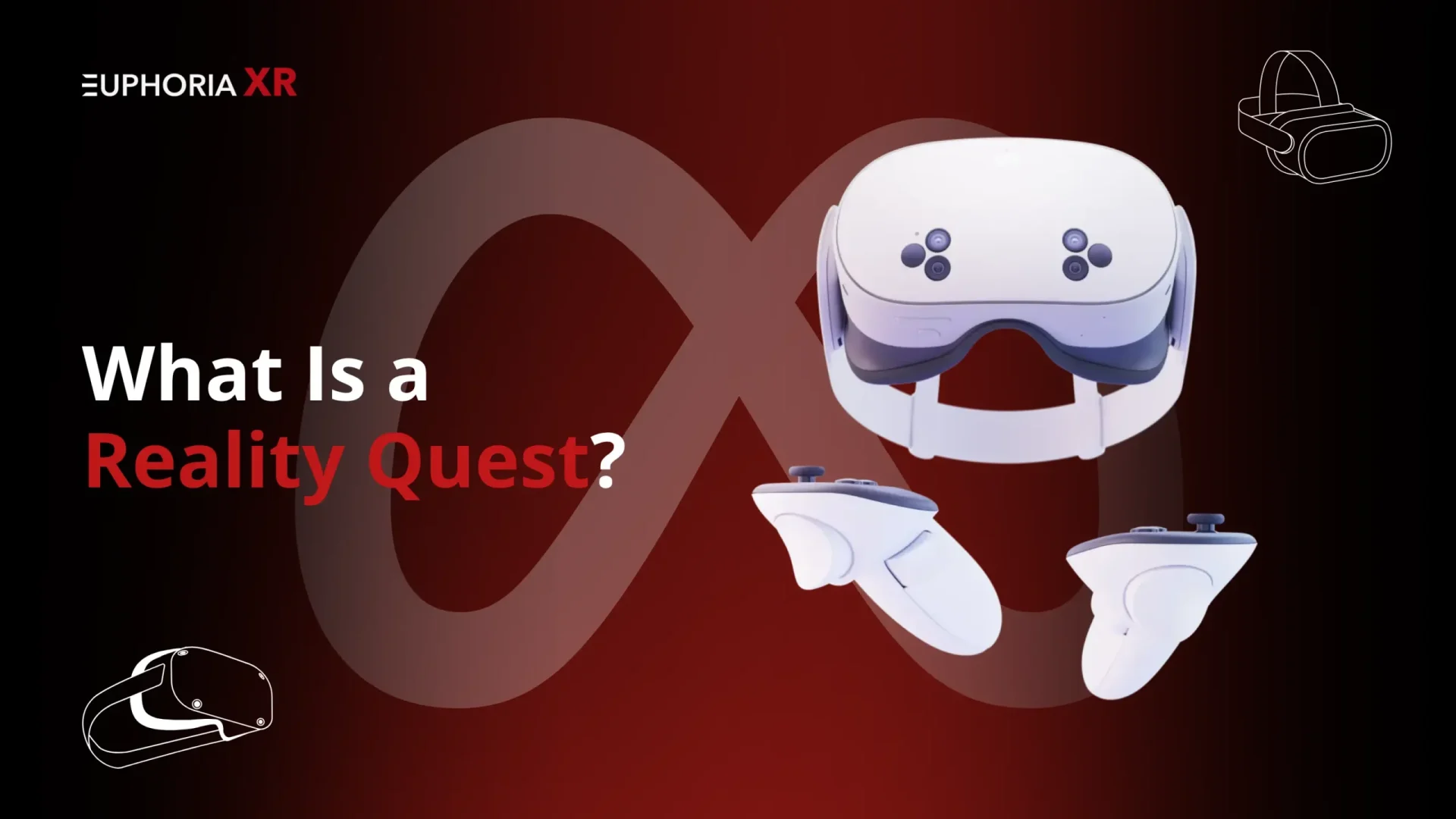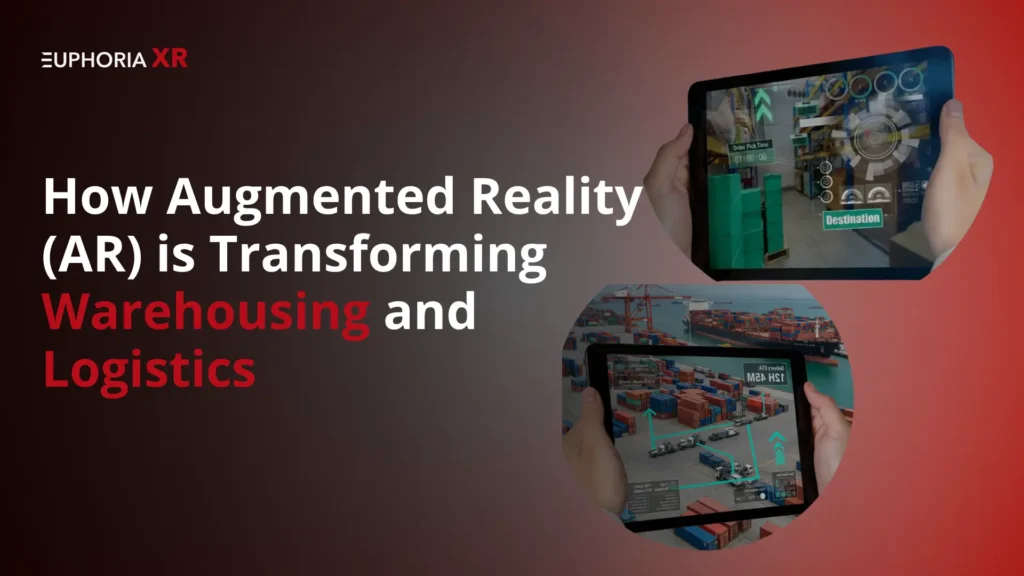What Is Reality Quest?
What it would be like, he wondered, to walk into a story, not to read it?
That is the secret of Reality Quest: A fresh generation of immersive play, where we combine virtual worlds, real-world interaction, and AI personalisation to produce not just another game to play but something you live.
As compared to other video games or escape rooms, Reality Quests are designed in such a way that the setting changes over time according to your decisions. Using VR headsets, AR overlays, or mixed reality, Reality Quests bring digital and physical worlds together, so you become the subject of the story.
Consider it a mix of a game, a story, and self-change — powered by cutting-edge AR VR Development Company Services that turn imagination into immersive impact.”
Core Features of the Reality Quest Experience
It is not idle graphics and even a headset that makes up the fabric of Reality Quests; instead, it is by experience design. The following is what is so powerful about them:
Purpose and Immersive Objectives
A Reality Quest has a basic mission; however, the way you decide to accomplish it is your choice. The stories found in the quests are quite frequently branched, emotional, and have tasks that involve meaningful problem-solving.
Gameplay Mechanics and Player Roles
The experiences do not assume a dimension of win or lose. You might:
Discover secret virtual worlds with hints on your geographical terrain.
Actions are controlled by the use of the voice or gestures.
Be involved in ethical judgments that affect the environment you live in.
World Exploration and Character Progression
The frequently you play, the more your surrounding responds. With AI engines, your decisions are recorded, and future interactions are planned after what you do, like Netflix makes suggested shows, but a step ahead.
Winning Strategies and Success Tips
Reality Quests usually pay off:
Offline or real-time cooperation with others
Emotional intelligence (suppose, empathy, trust, patience)
Creative problem-solving
Indeed, PwC studies indicate that users trained by using VR learn four times as fast as usual, and they are, on the one hand, 275 percent more confident using the new skills they learned later. The Reality Quests use the effect, both recreationally and practically.
Digital Reality: The Foundation of Reality Quests
What Is Digital Reality?
Just imagine covering digital magic on top of your daily world, that is Digital Reality.
Digital Reality describes a variety of immersion technologies, such as Virtual Reality (VR), Augmented Reality (AR), Mixed Reality (MR), and Extended Reality (XR). They are not simply buzzwords; they are the devices that destroy the barrier between reality and fantasy.
Let us put it into the little bits of analysis:
Virtual Reality (VR): Completely immersive digital spaces (e.g., visiting a fantasy world by using a headset).
Augmented Reality (AR): Virtual information placed on top of a real-life environment (a computer game like Pokémon GO, or previewing furniture using augmented reality).
Mixed Reality (MR): The real and the digital objects interact with each other, such as having a digital dragon on your sofa that you can even pet.
Extended Reality (XR): All the above summed up under a blanket term.
Collectively, these technologies drive Reality Quest, and they enable individuals to traverse through digital-augmented worlds, which seem real to them, they engage them, and learn in real time.
Statista reports that the extended reality (XR) market would be more than 100 billion by 2026 (compared to 38 billion in 2023).
The Evolution of Immersive Platforms
Even five years ago, VR could only mean heavy goggles, sickness, and pixelation. Today? It has high-res displays, feather-light hardware, and complete body motion tracking.
Platform development:
Meta Quest 3 and Apple Vision Pro: They brought about usable color passthrough and spatial computing, true mixed reality.
Niantic Lightship and Snap AR: Introduced a new level of mobile game to the AR and real-world navigation.
WebXR & ARCore: Enabled the possibility of getting access to immersive experiences, without the need to install the apps.
These platforms turned Reality Quests into scalable, accessible, and interesting. They have made digital reality a new normal by making it an interesting avenue to entertain, learn, and shop, as well as keep fit.
These platforms turned Reality Quests intxo scalable, accessible, and engaging experiences. They’ve made digital reality the new normal—transforming the way we entertain, learn, shop, and stay fit. Looking to build your immersive solution?
AI’s Role in Reality Quest
How AI Personalizes Reality Quests
In case digital reality constructs the world, AI regulates the weather, plot, and tone.
By:
Reading emotions: Reading eyes or tone of voice, or biofeedback.
Real-time adaptation of stories: The characters react according to the individual players.
Acquisition of patterns of behavior: Future scenes are defined by choices and fears.
This implies that there are no repetitive quests.
The example is that, taking longer on a forest scene, the AI may prompt ambient effects or, better still, open hidden passages. When your heart rate skyrockets, the experience can relieve stress or cause it to intensify; it all depends on what the quest is seeking to achieve.
Case Study: AI in Virtual Shopping
So, now we will bring something into real life:
Gucci Garden at Roblox and the Nike NIKELAND utilized AI to generate personal Reality Quest-like retail experiences.
The way it worked:
AI monitored the movement of users, the gaze time, and interaction areas.
On that information, it reorganized the store layout and engaged certain product interactions, such as a mini fashion quest.
Result? Within the first few months, Nike enjoyed a visit of more than 7 million people. Gucci is selling limited-edition virtual products at up to 4 000USD (Forbes, 2022).
They are not mere games, but they are immersive retail experiences created on the framework of The Reality Quest with the help of AI.
Industry Impact of Reality Quest
Reality Quest is not only an idea of the future, but it is an innovation that is already transforming the process of entire industries to reach, educate, and improve human beings.
Applications in Education, Retail, and Wellness
Education: The Playful Learning
Traditional learning can not keep pace with short attention spans and digital natives. The Reality Quests are interactive simulations in which students enter a historic moment, or scientific model, or the account of a culture.
Example: A Reality Quest on biology may allow students to navigate through a three-dimensional cell, or even be reduced in size so that they can travel through the bloodstream, making difficult science a highly memorable experience.
Retail: Window Shopping to Adventure
Reality Quests are changing the shopping experience into brand experiences.
Just think of how fulfilling it would be to enter a virtual Nike dressing room, where what you wear unlocks mini games, or Sephora leads customers on a skincare journey, dependent on their type of skin. It is not only that such experiences sell the products, but also create brand loyalty by interacting with them.
Deloitte says retailers are converting customers to buy products 40 percent more in AR-related experiences.
Wellness: Wellness, Habits, and Mental Fitness
With options such as guided meditation in the temple to breathwork adventures in relaxing rainforests, Reality Quests in wellness enable the user to detach themselves from the stressors of everyday life and reprogram themselves to a new routine.
They are already used as:
Therapy in mental health (e.g., phobia exposure, treatment of PTSD)
Physical rehabilitation
Sleep enhancement programmes
Gamified Learning and Experiential Training
The human brain desires success because achievement is a desire. Students excel in learning when given an opportunity to have fun through interactive things to do to make progress.
This is transforming:
Corporate training (team-building quests)
Military simulation
Healthcare onboarding
The Future of Reality Quest
Ethical Considerations in Digital Environments
As our VR experiences become more realistic, we are confronted with big ethical issues:
What happens when an emotionally AI-controlled character is used?
What can we do to guard our children against this manipulative game play?
Are companies allowed to advertise in a Reality Quest?
In May 2022, the Center for Humane Technology published a report that placed pressure on the regulation of emotional AI in immersive settings.
Reality Quest is out on a policy race, much like social media did a decade ago. Data privacy, consent, and manipulation of emotions are the issues that should be discussed on a global scale in the upcoming 5 years.
Trends and Predictions for 2030 and Beyond
This is what lies ahead of Reality Quest:
1. Biofeedback Integration
Quests will react to your breathing, heartbeat, or brainwaves. Otherwise, it may change the landscape in case of your anxiety. It may push you more, in case you are relaxed.
2. AI-Generated Realities
Such tools as ChatGPT and Sora will create individual worlds in real-time so that every adventure is different and unique and depends on the style, voice, and aims of a player.
3. Wearable Interfaces
Quest glasses and smart glasses will enable you to connect with quests even on the move, transforming the simple activities of everyday life (walking the dog, brushing the teeth) into growth quests.
4. Tokenized Progress
The blockchain technology may enable users to own a portion of their adventures, such as in the form of achievements, worlds, or characters, and establish new economies on immersive storytelling.
5. Integration of Education Curricula
By 2030, Reality Quests may be included in national learning curriculum, subscribing to training in subjects such as history, geography, and ethics in the form of interactive plots.
Conclusion
Reality Quest is no mere tech buzzword, but a paradigm shift of learning, healing, shopping, and connecting.
It combines the power of AI, digital reality, and human emotions, thereby turning it into something truly interesting and individual. It is shaping our perception of the world, whether we use it at school, as therapy, or as entertainment.
And as this technology develops, there is just one definite thing:
The story isn’t just to be watched — it’s yours to shape. Love what you see?















